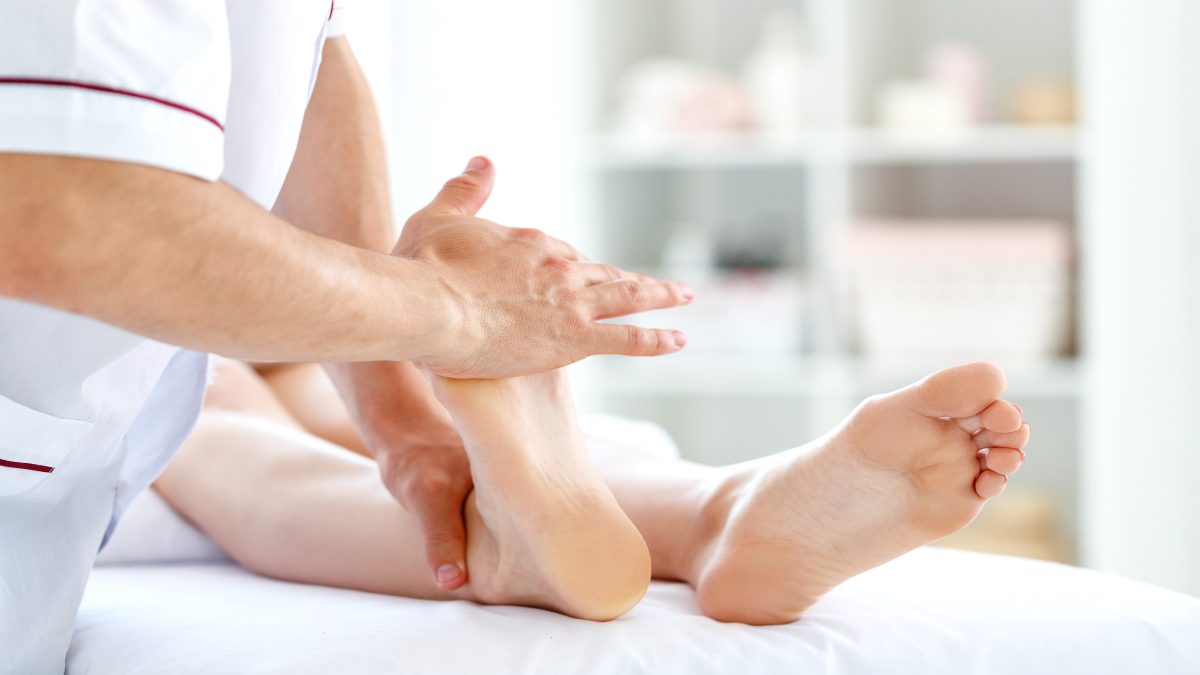Foot pain diagnosis
To diagnose your foot pain, your doctor will begin with a review of your medical or health history, and you may be asked questions about your symptoms.
Your healthcare provider will perform a physical exam, looking at and examining your feet and any other areas of your body you are having problems with. You may be asked to stand and walk if you can, and your doctor may move your feet around in different directions. Your reflexes and your response to sensation may be checked, too.
Depending on your medical history and what the doctor finds during the physical examination, additional tests or imaging studies may be recommended to help in diagnosing the reason for your foot pain.
Laboratory tests
A sample of joint fluid or blood can often help confirm a diagnosis or screen for problems that could lead to foot pain. For instance, blood tests may reveal high levels of certain antibodies that may suggest rheumatoid arthritis or other inflammatory conditions. Joint fluid samples could contain crystals suggesting gout or they could contain infectious material, indicating the reason for foot pain is an infection.
Imaging studies
The tests used most often to diagnose foot pain include:
- X-rays: Radiographs are plain X-rays that create a picture of the bones. X-rays allow the doctor to see:
- The joint space: Abnormalities in the joint space may suggest arthritis and can help determine its severity.
- Bone spurs: Also called osteophytes, these are also a sign of osteoarthritis that are visible on X-rays.
- Fractures: Tiny cracks in the bones of the feet may not appear on an X-ray, but broken bones in the feet and toes will be revealed on a plain radiograph film most of the time.
- Arthrography: This is an X-ray that is preceded by the injection of contrast dye into a joint. The dye makes it possible for the doctor to see the joints of the foot more clearly on the X-ray.
- Computed tomography: This is commonly referred to as a CT scan. In this imaging test, X-rays are taken from multiple angles, and a computer combines the images, so cross-sectional images of the foot can be viewed. The doctor can use a CT scan to look for problems that cannot be picked up on a plain X-ray.
- Magnetic resonance imaging: This is also called MRI. A computer, along with a strong magnetic field, is used to create images of the inside of the foot. It does not involve radiation, and it is beneficial if soft tissue injuries or disorders are suspected.
- Videofluoroscopy: This test takes live pictures of the movement of the foot and its internal structures.
- Bone scan: This is used to diagnose such foot pain causes as stress fractures or other conditions in which new bone tissue is being laid down in the body.
- Nerve conduction studies: This measures the speed with which nerve fibers transmit signals. This tells the doctor information about the health of the nerves of the foot.
- Electromyography: This test records the electrical activity of the muscles. This gives the doctor information about the communication between muscles and nerves.
Treatment of foot pain
Foot pain treatments depend on what is causing your symptoms. If your pain is related to an injury when you first notice the pain, you can try the RICE method, which stands for rest, ice, compression, and elevation.
- Rest: This allows time for the tissues to begin healing and prevents further injury from occurring. If bearing weight on an injured foot causes increased pain, crutches or a brace might be recommended.
- Ice: Ice helps to decrease swelling and inflammation in the injured tissues and reduces pain. Do not leave an ice pack on longer than 15 to 20 minutes, and always wrap ice or an ice pack in a thin towel or a soft cloth to protect your skin.
- Compression: Wrapping your injured foot in an elastic bandage can also help relieve swelling and provide support. Be sure to start at your toes and wrap toward your ankle, and do not apply a compression wrap too tightly. If numbness occurs in your toes, loosen the wrap or remove it.
- Elevation: Prop your foot above the level of your heart to decrease swelling in the injured tissues and decrease foot pain.
Non-prescription medications for foot pain treatment like ibuprofen or naproxen can also help relieve pain. If you cannot take these medications, acetaminophen can also be used to treat mild to moderate foot pain. Always follow the directions on the label when using these medications.
















Leave a Reply
You must be logged in to post a comment.